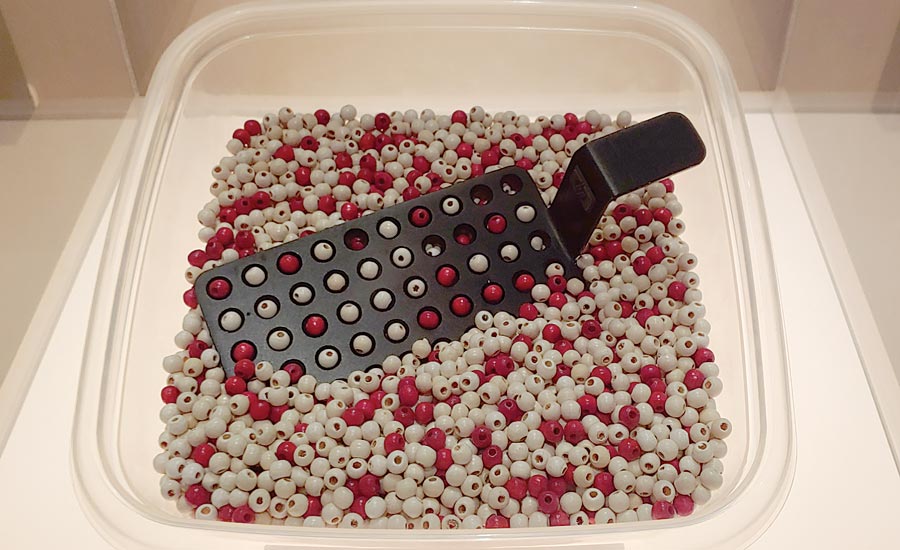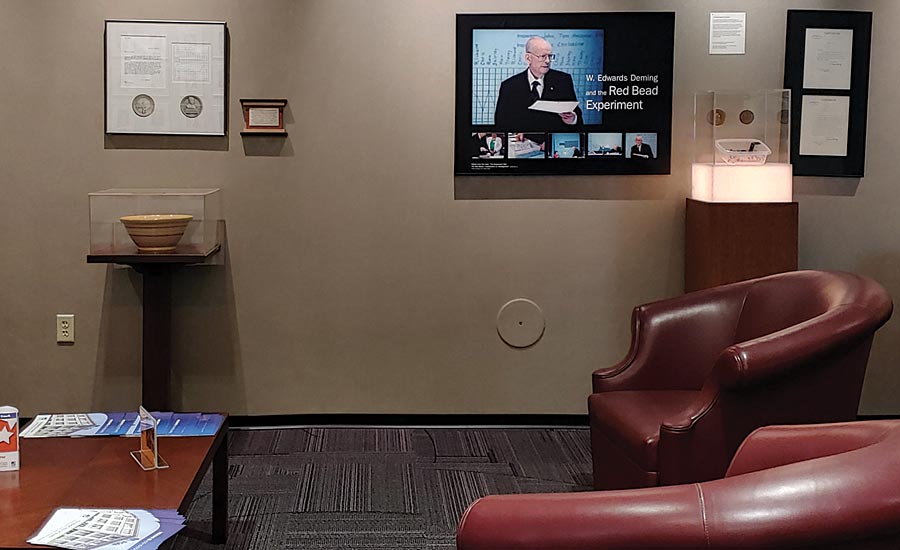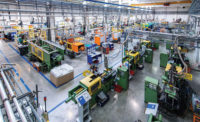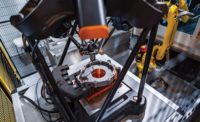The holiday season is over. You made it! You can take a breath. You are ready for the hustle and bustle of 2020. There will be new projects, challenges, and successes. You will attack them all with your quality toolkit. But, before you leap forward into what will undoubtedly be an eventful year (aren’t they all?), let’s look back. In a January issue, it’s quite likely you would find a reminiscence of 2019. However, let’s go back nearly 100 years to recount events that shaped quality thought and the trajectory of the profession. These crucial events involve teaching devices proudly displayed at the ASQ offices in Milwaukee. (see photos)
In 1924, Walter Shewhart was a manager for Bell Laboratories. On May 16 he sent an internal memo to his colleagues explaining a new tool he’d been working on. The tool was developed to distinguish between common and special causes of variation. The tool was called the control chart. In order to properly explain his control charts, he needed a device he could use to pull random samples and chart them. To manage the exercise, he took a regular kitchen bowl and filled it with metallic chips. The experiment simulated conditions engineers would see on the floor and could be charted to display common and special cause variation. This device became known as the Shewhart Bowl. (see photo)
One of the engineers working at Bell Labs when Shewhart introduced the control chart was W. Edwards Deming. He became very interested in this statistical innovation. Building on the Shewhart bowl, Deming would later introduce the red bead experiment (see photo), which was designed as a classroom exercise to show students that no matter how willing and able a worker is, goals cannot be met, quality will never occur, and organizations won’t stay in business unless a valid system is in place.*

ASQ received this donation of W. Edwards Deming's red bead experiment, and accompanying documents, from Diane Deming Cahill, Paul Selden, and Mike Johnson.
ASQ is proud to display these elegant examples of quality’s past that connect theory to the devices that helped Deming and Shewhart propel quality management and statistical control to the future. It’s important to be aware of these simple, yet significant artifacts, and to understand their original use and how the learnings broadened quality methodology’s scope.

ASQ's 5th floor display area, featuring the Shewhart Bowl and Deming's red bead experiment.
* The video series, Lessons from the Red Bead Experiment, presented by the Deming Institute (and found on YouTube), is a great primer, describing the importance of the interactive activity. And, Deming is instructing! Watch the series, and many other Deming-related videos at https://www.youtube.com/watch?v=W6VD5dcslJM.




